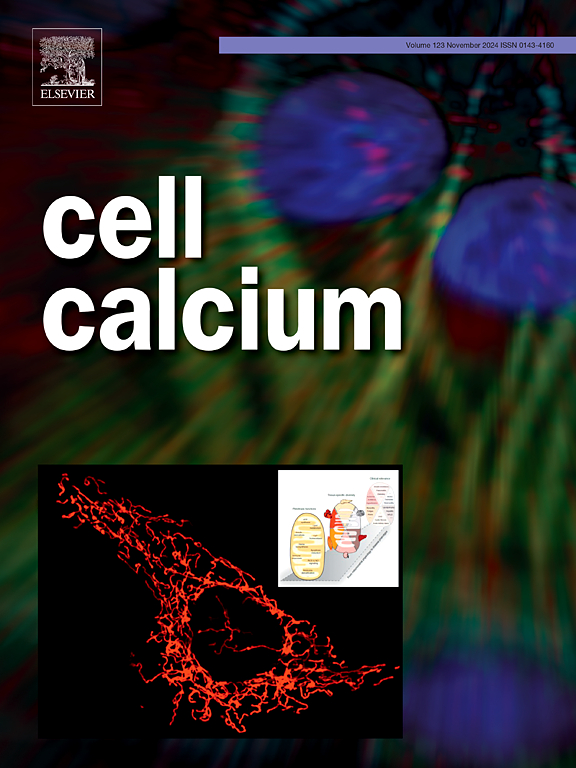Macrophage migration inhibitory factor induces phospholamban phosphorylation in cardiac muscle
IF 4
2区 生物学
Q2 CELL BIOLOGY
引用次数: 0
Abstract
The pleiotropic cytokine macrophage migration inhibitory factor (MIF) elevates sarcoplasmic reticulum (SR) Ca2+ content and enhances Ca2+ transient in cardiac muscle. Our imaging and immunoblot data indicated that the MIF-evoked effect is caused mainly by the phosphorylation of the SR Ca2+-pump regulator phospholamban (PLN). Gene expression data suggested that the cluster of differentiation 74 (CD74) and the C-X-C motif chemokine receptor 7 (CXCR7) form a major MIF receptor complex in cardiomyocytes, but CXCR7 activation alone seemed sufficient to exert the MIF-evoked effect. Our pharmacological assessments suggested that phosphoinositide 3-kinase (PI3K), AKT kinase and endothelial nitric oxide synthase (eNOS) were continuously stimulated in the downstream of CXCR7 activation. Furthermore, NO thus generated likely reacted to activate Ca2+/calmodulin-dependent protein kinase II (CaMKII), leading to PLN phosphorylation and subsequent SR Ca2+-pump activation. Therefore, the CXCR7-PI3K-AKT-eNOS-CaMKII-PLN axis is proposed as a central pathway for MIF-evoked potentiation of cardiac Ca2+ signaling.

巨噬细胞迁移抑制因子诱导心肌磷酸化
多受体细胞因子巨噬细胞迁移抑制因子(MIF)可提高肌浆网(SR) Ca2+含量,增强心肌Ca2+瞬态。我们的成像和免疫印迹数据表明,mif诱发的效应主要是由SR Ca2+泵调节因子磷蛋白(PLN)的磷酸化引起的。基因表达数据表明,分化簇74 (CD74)和C-X-C基序趋化因子受体7 (CXCR7)在心肌细胞中形成了一个主要的MIF受体复合物,但单独激活CXCR7似乎足以发挥MIF诱发的作用。我们的药理学评估表明,在CXCR7激活的下游,磷酸肌肽3激酶(PI3K)、AKT激酶和内皮型一氧化氮合酶(eNOS)持续受到刺激。此外,由此产生的NO可能反应激活Ca2+/钙调素依赖性蛋白激酶II (CaMKII),导致PLN磷酸化和随后的SR Ca2+泵激活。因此,CXCR7-PI3K-AKT-eNOS-CaMKII-PLN轴被认为是mif诱发心脏Ca2+信号增强的中心途径。
本文章由计算机程序翻译,如有差异,请以英文原文为准。
求助全文
约1分钟内获得全文
求助全文
来源期刊

Cell calcium
生物-细胞生物学
CiteScore
8.70
自引率
5.00%
发文量
115
审稿时长
35 days
期刊介绍:
Cell Calcium covers the field of calcium metabolism and signalling in living systems, from aspects including inorganic chemistry, physiology, molecular biology and pathology. Topic themes include:
Roles of calcium in regulating cellular events such as apoptosis, necrosis and organelle remodelling
Influence of calcium regulation in affecting health and disease outcomes
 求助内容:
求助内容: 应助结果提醒方式:
应助结果提醒方式:


